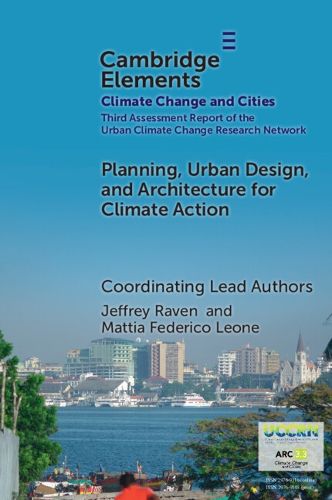Readings Newsletter
Become a Readings Member to make your shopping experience even easier.
Sign in or sign up for free!
You’re not far away from qualifying for FREE standard shipping within Australia
You’ve qualified for FREE standard shipping within Australia
The cart is loading…






Embedding climate resilient development principles in planning, urban design, and architecture means ensuring that transformation of the built environment helps achieve carbon neutrality, effective adaptation, and well-being for people and nature. Planners, urban designers, and architects are called to bridge the domains of research and practice and evolve their agency and capacity, developing methods and tools consistent across spatial scales to ensure the convergence of outcomes towards targets. Shaping change necessitates an innovative action-driven framework with multi-scale analysis of urban climate factors and co-mapping, co-design, and co-evaluation with city stakeholders and communities. This Element provides analysis on how urban climate factors, system efficiency, form and layout, building envelope and surface materials, and green/blue infrastructure affect key metrics and indicators related to complementary aspects like greenhouse gas emissions, impacts of extreme weather events, spatial and environmental justice, and human comfort. This title is also available as open access on Cambridge Core.
$9.00 standard shipping within Australia
FREE standard shipping within Australia for orders over $100.00
Express & International shipping calculated at checkout
Stock availability can be subject to change without notice. We recommend calling the shop or contacting our online team to check availability of low stock items. Please see our Shopping Online page for more details.
Embedding climate resilient development principles in planning, urban design, and architecture means ensuring that transformation of the built environment helps achieve carbon neutrality, effective adaptation, and well-being for people and nature. Planners, urban designers, and architects are called to bridge the domains of research and practice and evolve their agency and capacity, developing methods and tools consistent across spatial scales to ensure the convergence of outcomes towards targets. Shaping change necessitates an innovative action-driven framework with multi-scale analysis of urban climate factors and co-mapping, co-design, and co-evaluation with city stakeholders and communities. This Element provides analysis on how urban climate factors, system efficiency, form and layout, building envelope and surface materials, and green/blue infrastructure affect key metrics and indicators related to complementary aspects like greenhouse gas emissions, impacts of extreme weather events, spatial and environmental justice, and human comfort. This title is also available as open access on Cambridge Core.